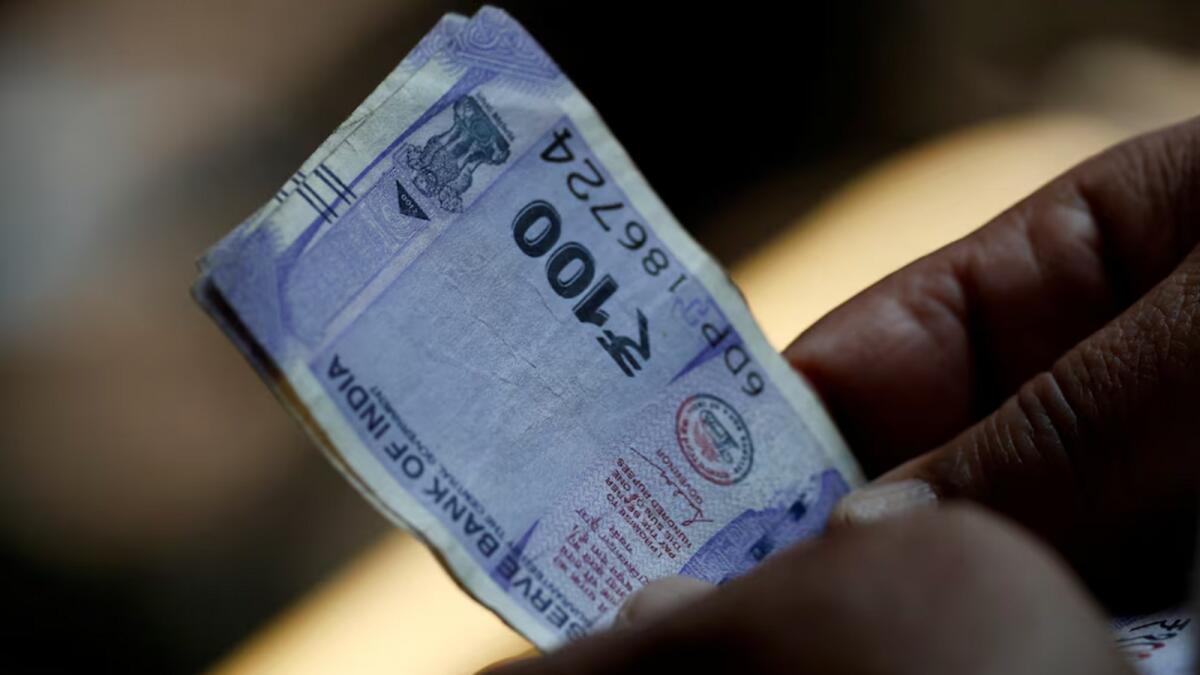The Indian rupee strengthened in early trade on Friday, buoyed by gains in most Asian currencies ahead of Federal Reserve Chair Jerome Powell’s remarks. The rupee was trading at 83.8850 against the US dollar, higher than its previous close. Asian currencies, including the Chinese yuan and Thai baht, were mostly up on the day, while the dollar index was slightly lower. A foreign exchange trader noted that the rupee should be around 83.75 given the weak dollar, but limited inflows and strong demand from importers have kept it in a narrow range. Oil companies bidding for dollars on Friday also added pressure on the rupee’s upside.
Overseas investors have withdrawn about $2.1 billion from Indian stocks in August, contrasting the significant inflows in June and July. Despite the outflows, the rupee is expected to trade positively, with gains likely to be limited near 83.80. Federal Reserve policymakers have expressed their support for US interest rate cuts starting next month, with comments from Fed Chair Powell awaited by investors. Interest rate futures fully anticipate a 25 basis-point rate cut in September, with a 26% chance of a 50 basis-point cut, according to the CME’s FedWatch tool.
Staying informed with the latest news is crucial, and following KT on WhatsApp Channels can ensure you are updated on market movements and key developments. The confluence of factors such as US interest rate cuts, overseas investment flows, and demand for dollars from local companies can impact the rupee’s performance. While the rupee is currently on the stronger side, external factors play a significant role in its movement. As investors await Powell’s remarks, the market sentiment is likely to shift based on the clarity provided by the Fed regarding future rate cuts.
The rupee’s strength against the dollar is influenced by various factors, including global economic conditions, geopolitical tensions, and monetary policies adopted by central banks. As the dollar remains under pressure, the rupee’s performance can be impacted by inflows, outflows, and demand for the greenback from local entities. The rupee’s relative stability in the face of global uncertainties reflects the resilience of the Indian economy and its ability to weather external challenges. Keeping a close eye on market trends and key announcements can help investors make informed decisions and navigate the volatile currency markets effectively.
In conclusion, the Indian rupee’s performance against the US dollar is influenced by a myriad of factors, including global economic conditions, Federal Reserve policy decisions, and local market dynamics. While the rupee has shown strength in early trade, ongoing developments such as interest rate cuts and investment flows can shape its future trajectory. By staying informed and monitoring key indicators, investors can position themselves strategically and capitalize on the opportunities presented by currency market fluctuations. As the market awaits Powell’s remarks and assesses the implications of potential rate cuts, the rupee’s movement is likely to be closely monitored by traders and analysts alike.











